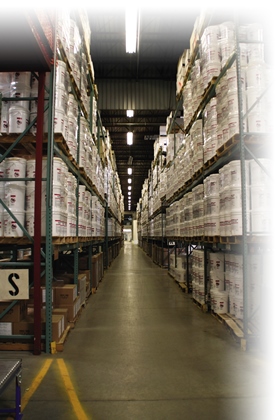
To help you, we have prepared a list of factors to consider. Read on below for some brief thoughts to keep in mind when you are shopping around for the right solutions for your building.
Factors to Consider When Choosing Roofing Products
◦ What is the height of your building? A building with several stories will be subject to heavier wind loads than a building with only one or two stories. Wind uplift resistance will be a factor (and by extension, how the roofing products will be adhered to the building). It will also affect roof accessibility and the roofing contractor’s ability to transfer materials, debris, and tools on and off the rooftop – points which weigh on roofing materials that are transferable to buildings of greater height.
◦ Where is the building location? Building location is another point with many dimensions to it. Factors such as local, regional, or state compliance standards and work standards come into play. Things to keep in mind include:
▪ Relevant, applicable building codes
▪ Fire code requirements set by state and/or local authorities
▪ Building energy codes or compliance standards (such as California Title 24 Compliance)
▪ Applicable local ordinances, such as ones relating to permitted work hours or sound levels at different times of day
◦ What is the local climate like? Local climate is of tremendous importance. When selecting roofing products, it is advisable to keep local conditions in mind. These include annual precipitation patterns, temperature ranges throughout the year, any patterns of high-wind activity, and whether the area tends to have a warmer or colder climate. For instance, buildings in areas with warmer conditions, such as the southern United States, will strongly benefit from energy-efficient roofing products. Other regions with more demanding climates, such as the northeastern United States, will require roofing products that can stand up to abuse and preferably have high insulation value.
◦ What are your building’s and roof’s characteristics? Commercial buildings differ in terms of their architectural design, rooftop features and protrusions, operating purpose, and more. Because each building is unique, it important to be sure that any roofing products used on your building are best-suited for your property’s specific features. Things to keep in mind include:
▪ The number of protrusions your roof has
▪ Any rooftop units or features, such as HVAC systems, piping, electronic equipment, and others
▪ The presence of any parapet walls, or walls extending beyond the roof line
▪ The scale of your building size
▪ Existing roof construction and water drainage measures or systems
▪ Whether your roof is made up of a singular body, or broken up into small sections
▪ Your roof’s structural capacity
▪ Whether the building is a manufacturing or industrial plant, and has any output like chemical agents that come out on the rooftop
Be sure to consult with professional building engineers and roofing service providers so you are fully apprised of your options.
◦ What is the reputation of the product line itself? For the purposes of keeping your building and interior assets safe for the long haul and your roof warranty intact, your commercial roof should be handled with quality products. Dependable roofing products will have a solid history, a widespread user base, a credible performance record, proven customer benefits, strong industry endorsements, and a reputation for standard compliance. As for credible roofing product manufacturers: a reliable manufacturer will have been around for a while, have a solid history of releasing great-performing products, have a solid, professional training program for roofing contractors, and have strong industry credibility.
Why We Use Conklin Roofing Products
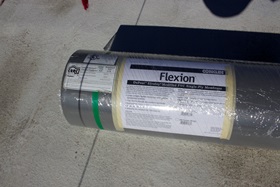
Conklin has been an established, widely-respected manufacturer in the building products industry for over 40+ years. It was the inventor of the first acrylic roof coating for the commercial roofing industry, and it has persisted in its product innovation ever since. Here are a few brief reasons why Conklin roofing products stand out:
- Applied successfully on 2+ billion square feet nationwide
- Trusted by roofing contractors, building engineers, property owners and managers, and other commercial real estate professionals nationwide
- Diverse product selection for a wide scope of commercial roofing needs and climate conditions
- Proven product formulation which offers energy efficiency, durability, and longevity
- Seamless, leak-resistant, fully adhered roof protection
- Applicable on buildings with challenging features or complex architectural designs
- ENERGY STAR® certification
- Reflective, white surface that can save you 30-50% on yearly A/C costs
- Backed by non-prorated warranty guarantees on 100% of labor and material costs
- Do not require roof replacement and tear-off to be applied
- Fewer roof life-cycle costs with Conklin product line
For more information about how these products can be of benefit to you, give us a call at (800) 670-5583.
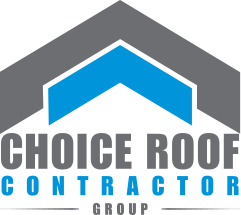
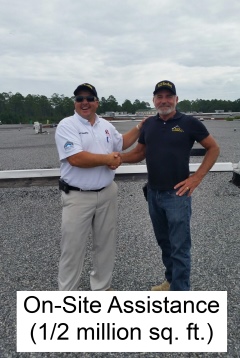 There are many opportunities in commercial roofing. In just 2014 alone, commercial roofing sales are expected to top off at $5.3 billion. Plus, in the future, the nationwide commercial roofing market is projected to reach new heights.
There are many opportunities in commercial roofing. In just 2014 alone, commercial roofing sales are expected to top off at $5.3 billion. Plus, in the future, the nationwide commercial roofing market is projected to reach new heights. People have taken our sales tips and completely transformed their roofing companies. Contractors have even added six-figure revenue streams to their bottom line as early as their second year of using the products we represent from Conklin. And we provide these exclusive, proven, insider tricks-of-the-trade to you complete with a dinner featuring some of the best steak in all of Kansas City.
People have taken our sales tips and completely transformed their roofing companies. Contractors have even added six-figure revenue streams to their bottom line as early as their second year of using the products we represent from Conklin. And we provide these exclusive, proven, insider tricks-of-the-trade to you complete with a dinner featuring some of the best steak in all of Kansas City.
 We’re currently halfway through the first day of Conklin’s product training at their Kansas City headquarters and having a great time with 9 different individuals who came out from as far as Florida to meet us personally and join our nationwide group of commercial roof contractors.
We’re currently halfway through the first day of Conklin’s product training at their Kansas City headquarters and having a great time with 9 different individuals who came out from as far as Florida to meet us personally and join our nationwide group of commercial roof contractors.  Two other contractors arrived later in the day, so to get them up to speed, we went to a different restaurant and had some more great Kansas City food while getting to know each other well. It was well after 11pm before we wrapped things up, but still have a lot more to cover.
Two other contractors arrived later in the day, so to get them up to speed, we went to a different restaurant and had some more great Kansas City food while getting to know each other well. It was well after 11pm before we wrapped things up, but still have a lot more to cover. • The best marketing strategies for getting started quickly and cost-effectively
• The best marketing strategies for getting started quickly and cost-effectively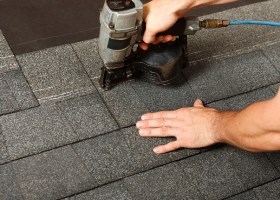 If you’re interested in expanding your roofing company, there are some great opportunities in commercial roofing. Just one commercial job can deliver the payout of 50 residential jobs. And the commercial roofing industry is growing. It’s expected to reach $5.3 billion this year and balloon to new heights in the years ahead.
If you’re interested in expanding your roofing company, there are some great opportunities in commercial roofing. Just one commercial job can deliver the payout of 50 residential jobs. And the commercial roofing industry is growing. It’s expected to reach $5.3 billion this year and balloon to new heights in the years ahead.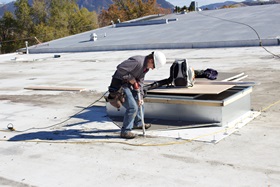 For those new to the scene, one big challenge is winning out over those with years of commercial roofing experience. It’s not unusual for experienced contractors to be among the competition on larger-scale jobs.
For those new to the scene, one big challenge is winning out over those with years of commercial roofing experience. It’s not unusual for experienced contractors to be among the competition on larger-scale jobs.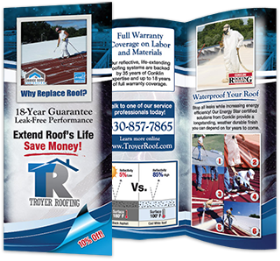 If you don’t have any proven method of getting large jobs: no sweat. Our veteran contractors will share their own experiences with the approaches that work best, that don’t, and that are the most cost-effective. In recent efforts, our dedicated mentors have helped members secure the beginning phase of roofing projects as big as 400,000+ square feet.
If you don’t have any proven method of getting large jobs: no sweat. Our veteran contractors will share their own experiences with the approaches that work best, that don’t, and that are the most cost-effective. In recent efforts, our dedicated mentors have helped members secure the beginning phase of roofing projects as big as 400,000+ square feet.
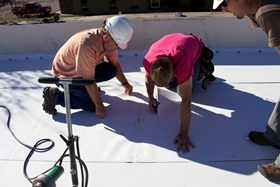 One sizable hurdle facing new contractors is how to handle new business or roofing situations. It’s yet another area where experienced commercial contractors have the advantage.
One sizable hurdle facing new contractors is how to handle new business or roofing situations. It’s yet another area where experienced commercial contractors have the advantage.
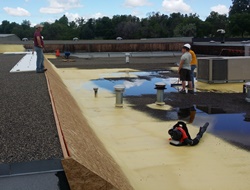 Complex commercial roofing problems are faced on a regular basis by architects, building owners and roofing contractors, especially today when rising energy costs and environment awareness are important considerations when installing a new roof or doing extensive roof repair. Asking the right questions can help discover proper and simple solutions that will satisfy the need for quality roofing, and ensure that energy costs can be contained and environmental issues addressed.
Complex commercial roofing problems are faced on a regular basis by architects, building owners and roofing contractors, especially today when rising energy costs and environment awareness are important considerations when installing a new roof or doing extensive roof repair. Asking the right questions can help discover proper and simple solutions that will satisfy the need for quality roofing, and ensure that energy costs can be contained and environmental issues addressed.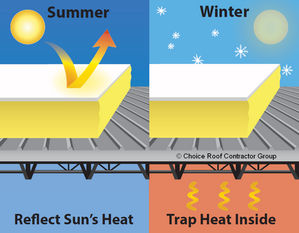 Energy efficiency can be greatly influenced by the type of insulation used and can be a great factor when it comes to energy savings than the roof color. Problems associated with condensation can be eliminated in part due to how many layers of insulation are applied.
Energy efficiency can be greatly influenced by the type of insulation used and can be a great factor when it comes to energy savings than the roof color. Problems associated with condensation can be eliminated in part due to how many layers of insulation are applied. A proper roof system design and installation is the first step in not only becoming code compliant, but in taking control over roof system durability and longevity. Every professional roof contractor realizes that there are legal minimums for being code compliant regarding weather protection and other minimum requirements as they relate to meeting minimal standards regarding performance, materials and coverings, insulation and re-roofing as well as fire resistance. The minimal requirements are stated in Chapter 15 of the International Building Code. Designing and installing roof systems well above these minimum levels is what sets a quality commercial roofer above the rest and puts him or her in high demand among customers.
A proper roof system design and installation is the first step in not only becoming code compliant, but in taking control over roof system durability and longevity. Every professional roof contractor realizes that there are legal minimums for being code compliant regarding weather protection and other minimum requirements as they relate to meeting minimal standards regarding performance, materials and coverings, insulation and re-roofing as well as fire resistance. The minimal requirements are stated in Chapter 15 of the International Building Code. Designing and installing roof systems well above these minimum levels is what sets a quality commercial roofer above the rest and puts him or her in high demand among customers.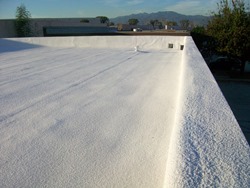 The roofing contractor can easily overlook drainage problems, especially localized drainage and therefore preventing localized ponding can be achieved by using tapered insulation on the upslope side of the rooftop as well as between scuppers.
The roofing contractor can easily overlook drainage problems, especially localized drainage and therefore preventing localized ponding can be achieved by using tapered insulation on the upslope side of the rooftop as well as between scuppers.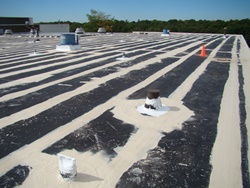 Today’s blog post focuses on the benefits of seamless roofing systems. Building owners, facility managers, and property management firms will find this information particularly helpful alongside our
Today’s blog post focuses on the benefits of seamless roofing systems. Building owners, facility managers, and property management firms will find this information particularly helpful alongside our 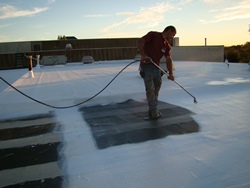 Simply put, seamless roofing refers to roofs that have a unified, consistent membrane body, or, in industry lingo, have a “monolithic” membrane composition. Because they do not have any seams, seamless roof systems are not vulnerable to leaks, drips, or water penetration in some of the ways that membrane roofs with seams are.
Simply put, seamless roofing refers to roofs that have a unified, consistent membrane body, or, in industry lingo, have a “monolithic” membrane composition. Because they do not have any seams, seamless roof systems are not vulnerable to leaks, drips, or water penetration in some of the ways that membrane roofs with seams are. As a nationwide network of commercial roofing specialists committed to excellence, Choice Roof Contractor Group strives to deliver the highest-caliber workmanship and service. Part of that involves using the right roofing products, and we have chosen the strong-performing Conklin roofing products for this need.
As a nationwide network of commercial roofing specialists committed to excellence, Choice Roof Contractor Group strives to deliver the highest-caliber workmanship and service. Part of that involves using the right roofing products, and we have chosen the strong-performing Conklin roofing products for this need. Before getting into the details: a little background on KCI Roofing. Based out of central Georgia, KCI Roofing has been in the roofing industry for 50 years. They have steadily grown into a large residential roofing company, and have done as much as $12 million in annual sales, with 25 salespeople and offices in multiple states. Having built up a strong presence in residential roofing, they have now turned to
Before getting into the details: a little background on KCI Roofing. Based out of central Georgia, KCI Roofing has been in the roofing industry for 50 years. They have steadily grown into a large residential roofing company, and have done as much as $12 million in annual sales, with 25 salespeople and offices in multiple states. Having built up a strong presence in residential roofing, they have now turned to  Just a few weeks ago, KCI Roofing received a 54,000 square foot roofing lead from us. And having reached out to old connections, they have begun opening up doors to look at many other commercial roofing projects, as well.
Just a few weeks ago, KCI Roofing received a 54,000 square foot roofing lead from us. And having reached out to old connections, they have begun opening up doors to look at many other commercial roofing projects, as well.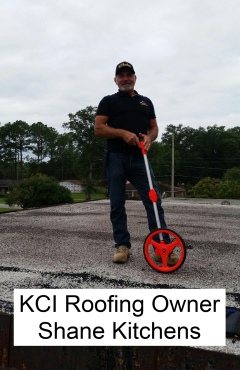 When asked for his thoughts on what has happened, Shane shared that he is impressed with the extent to which our network has helped them in their efforts. Now he and his team are much stronger and more confident in approaching commercial prospects, in carrying out effective sales presentations for interested prospects, and in their overall commercial roofing knowledge.
When asked for his thoughts on what has happened, Shane shared that he is impressed with the extent to which our network has helped them in their efforts. Now he and his team are much stronger and more confident in approaching commercial prospects, in carrying out effective sales presentations for interested prospects, and in their overall commercial roofing knowledge. The life of a roofing contractor is a busy one. It is also hard work resulting in plenty of headaches and sore muscles. Anyone in this industry is usually characterized as a breed onto himself or herself because they find the work rewarding despite the long hours and physical aches. They enjoy working with their hands and creating functional structures that stand the hardships of time and weather.
The life of a roofing contractor is a busy one. It is also hard work resulting in plenty of headaches and sore muscles. Anyone in this industry is usually characterized as a breed onto himself or herself because they find the work rewarding despite the long hours and physical aches. They enjoy working with their hands and creating functional structures that stand the hardships of time and weather. 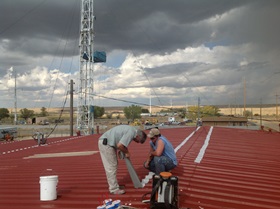 Change is inevitable in most things encountered in life, but more so when it comes to business because we are such creatures of habit and there is usually a price tag associated with changes in the workplace. We find it difficult to change the way we do things, especially when how we have done it in the past yields results that are acceptable. New technologies, and new expectations from owners can lead to a necessary change in regards to materials used, tools or labor.
Change is inevitable in most things encountered in life, but more so when it comes to business because we are such creatures of habit and there is usually a price tag associated with changes in the workplace. We find it difficult to change the way we do things, especially when how we have done it in the past yields results that are acceptable. New technologies, and new expectations from owners can lead to a necessary change in regards to materials used, tools or labor.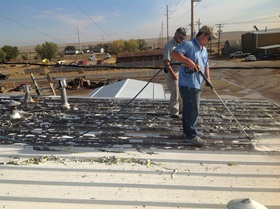 Common requirements of running a successful business can become a mental drain, especially for someone who would rather be outside working instead of pushing pen and paper. A successful business has to involve a high level of organization to run smoothly. Being disorganized is a common reason for business failure and can dismantle the passion a person experiences for being an entrepreneur.
Common requirements of running a successful business can become a mental drain, especially for someone who would rather be outside working instead of pushing pen and paper. A successful business has to involve a high level of organization to run smoothly. Being disorganized is a common reason for business failure and can dismantle the passion a person experiences for being an entrepreneur.  Many roofing contractors, especially when they are new in business, lack the knowledge or experience to bid successfully on bigger jobs. They have the passion for growing a business and this requires successfully pulling in larger roofing contracts. In order to be the successful bidder, they have to have the proper combination of price, materials and labor. We all dream big and want to see our dreams come true quickly, but the truth is it takes a lot of support to win the first round of large roofing contracts.
Many roofing contractors, especially when they are new in business, lack the knowledge or experience to bid successfully on bigger jobs. They have the passion for growing a business and this requires successfully pulling in larger roofing contracts. In order to be the successful bidder, they have to have the proper combination of price, materials and labor. We all dream big and want to see our dreams come true quickly, but the truth is it takes a lot of support to win the first round of large roofing contracts. Today’s blog post provides an overview of the benefits involved with
Today’s blog post provides an overview of the benefits involved with 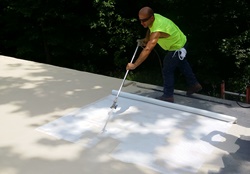 • Seamless roofing protection. Many EPDM rubber roofs come with seams. While they are often sealed off with high-performance product such as strong seam tape, over time the sun’s powerful energy can cause the seams to come apart. Water can then infiltrate the building through these exposed areas and form leaks.
• Seamless roofing protection. Many EPDM rubber roofs come with seams. While they are often sealed off with high-performance product such as strong seam tape, over time the sun’s powerful energy can cause the seams to come apart. Water can then infiltrate the building through these exposed areas and form leaks.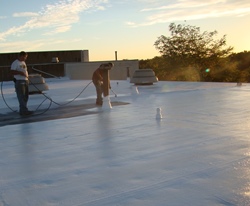 • Greatly enhanced potential for energy savings. With the emergence of energy-efficient roofing on the scene, there have been some great energy-efficient roofing products that have come-to-market.
• Greatly enhanced potential for energy savings. With the emergence of energy-efficient roofing on the scene, there have been some great energy-efficient roofing products that have come-to-market. 